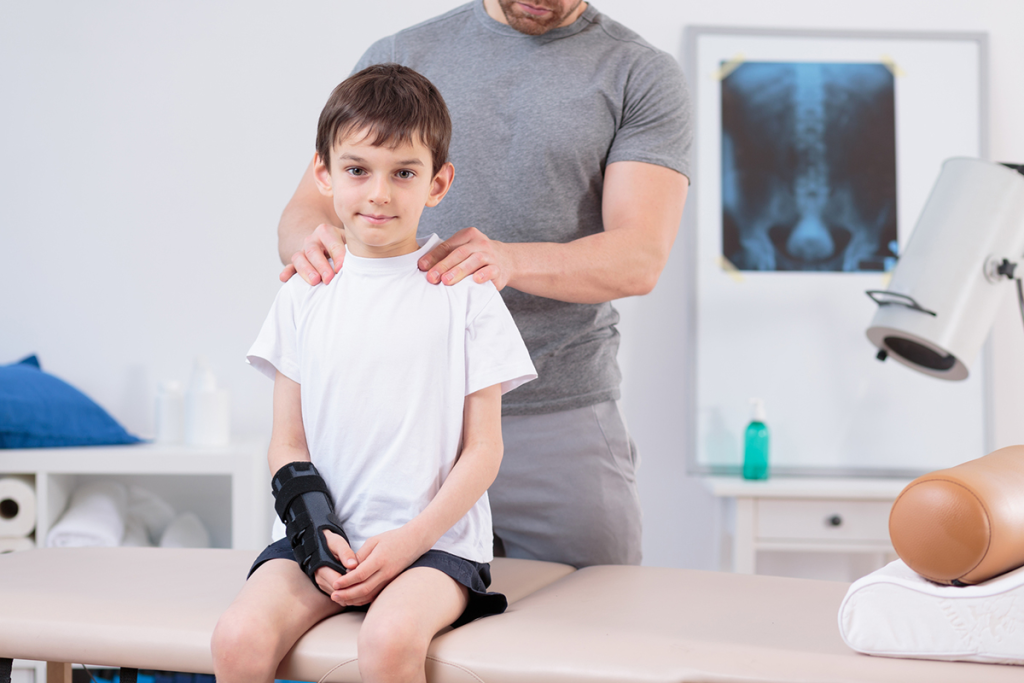Acute abdominal pain in kids is a top reason for emergency visits to the hospital. Acute appendicitis is the main cause of abdominal surgery all over the world. Understanding appendicitis symptoms, along with its causes, risks, and treatment, is important to help kids get better, like at LivHospital.

Acute appendicitis is the top reason for kids to have surgery on their belly. It makes up 33-50% of all emergency surgeries.

Non-traumatic pediatric abdominal surgical emergencies make up a significant part of pediatric admissions. They range from 2.4% to 4%. These emergencies need quick and accurate diagnosis for effective treatment and to avoid complications.
We will look into the commonality and effects of abdominal surgeries in kids. We’ll discuss the various risk factors and age-related differences. These are key to understanding these emergencies.
Children undergo abdominal surgeries for many reasons, with appendicitis being the most common. The frequency of appendicitis and other surgeries varies by age. It’s important for healthcare providers to know these conditions well.
Abdominal surgeries can have big effects on kids, both physically and emotionally. It’s important to think about the long-term effects and the need for follow-up care. This helps ensure a smooth recovery.

Age is a big risk factor for abdominal surgical emergencies in kids. For example, appendicitis is more common in older kids. On the other hand, intussusception is more typical in infants.
It’s important to understand these age-related differences for diagnosis. The signs of appendicitis can vary. Knowing the typical appendix location helps in identifying the condition. Symptoms like abdominal pain, vomiting, and fever are common. But how they present can change based on the child’s age and the specific condition.
Spotting these symptoms of appendicitis and other abdominal conditions early is critical. This allows for timely medical intervention. We will dive deeper into these conditions, highlighting the need for awareness and quick action.
Acute appendicitis is a big deal in kids, leading to many surgeries. Knowing who gets it and why helps us see its big impact.
Acute appendicitis is the top reason for kids to have surgery in their belly. It hits hardest between 9 and 12 years old. About 1 in 1,000 kids get it every year.
It’s more common in boys, but the gap narrows as kids grow older.
Key epidemiological factors include:
The appendix is a small, tube-like part of the large intestine. It’s usually in the lower right belly. Knowing where it is helps doctors figure out if it’s inflamed.
Appendicitis often starts with a blockage in the appendix. This blockage can come from:
In girls, symptoms can be tricky to spot because they might look like other female health issues. Common appendicitis symptoms in females include belly pain, nausea, and fever. Spotting these signs early is key to getting help fast.
Understanding these points is key to helping kids with appendicitis.
Appendicitis in kids can be hard to spot, but knowing the signs is key. These signs can be small, so catching them early is very important.
Appendicitis starts with pain in the belly, often near the navel or upper tummy. This pain then moves to the lower right side. It can be very bad and may make kids feel sick to their stomach, throw up, and lose their appetite. The pain can be so severe that it interferes with daily activities.
Kids might say the pain feels sharp or dull. It’s very important to listen to them, as waiting too long to get help can lead to serious problems.
The pain’s location and how it moves are big clues for appendicitis. At first, the pain might spread out or be near the navel. But it usually settles in the lower right side within hours. This pain moving is a big sign of appendicitis.
Appendicitis goes through different stages, each with its own signs:
Knowing these stages helps us see how serious appendicitis is and how fast we need to get medical help. As one doctor says,
“Prompt diagnosis and treatment are key to avoiding serious problems.”
In children, several abdominal conditions need surgery. These include appendicitis, intussusception, and incarcerated inguinal hernia. These are big concerns for young patients.
Intussusception is when a part of the intestine slides into another. This can block the intestine or cut off blood flow. It’s a big reason for surgery in babies, mostly between 5 to 10 months old.
Symptoms are pain in the belly, vomiting, and sometimes bloody stools. Quick diagnosis and treatment are key to avoid serious problems.
An incarcerated inguinal hernia traps a part of the intestine in the inguinal canal. This can cause blockage or lack of blood flow. It’s common in newborns and young babies.
It’s important to spot the signs early, like a tender swelling in the groin area. This helps in getting the right treatment fast.
Other conditions that might need surgery in kids include congenital anomalies and adhesions from previous surgeries. Each condition has its own challenges and needs a specific treatment plan.
It’s key for doctors to know about these conditions. This helps them give the right care at the right time. It can make a big difference for kids having surgery.
Diagnosing appendicitis is a mix of doctors’ checks and new tools. At LivHospital, we stress the need for quick and accurate diagnosis. This helps in treating it well and avoiding problems.
Figuring out appendicitis needs both doctors’ checks and new tech. We use ultrasound and CT scans to make sure it’s appendicitis and not something else. Blood tests, like white blood cell count and CRP levels, help see how bad it is.
We make sure our checks are thorough. This way, we can start treatment fast and right.
The main fix for appendicitis is taking out the appendix, called an appendectomy. We do this with laparoscopic or open surgery, depending on the patient. Laparoscopic is less invasive, leading to less pain and faster healing.
At LivHospital, we aim for top-notch results. Our surgery team is skilled in doing appendectomies carefully. This ensures the best outcome for our patients.
Good post-operative care is key for a smooth recovery. We offer full care, like managing pain and watching for any issues. Our team helps patients and their families through the healing process.
We’re dedicated to top healthcare from start to finish. We aim to create a caring and supportive place for all our patients.
Appendicitis is a big reason for belly surgeries in kids. It’s very important to catch it early and treat it right to avoid serious problems. At LivHospital, we focus on finding and treating appendicitis quickly to help our young patients get better.
It’s not always easy to know if a kid has appendicitis because the signs can be different. But thanks to new ways to diagnose and treat it, we can help kids get better more effectively.
We promise to keep giving top-notch healthcare. We offer full support and advice to patients from around the world who need advanced medical care.
Appendicitis is when the appendix gets inflamed. It’s a big reason kids need emergency surgery, making up 33-50% of cases.
The appendix is in the lower right abdomen. Symptoms include stomach pain, nausea, vomiting, and fever. Pain starts near the belly button and moves to the lower right.
Appendicitis has four stages: inflammation, suppuration, gangrene, and perforation. Catching it early is key to avoid serious problems like perforation.
Doctors use physical exams, medical history, lab tests, and imaging like ultrasound and CT scans to diagnose appendicitis.
Surgery to remove the appendix is usually the treatment. After surgery, doctors watch for complications, manage pain, and guide recovery.
Yes, other reasons include intussusception, hernias, and other serious conditions like intestinal blockages or trauma.
Symptoms in kids include stomach pain, nausea, and vomiting. In girls, it can be hard to tell apart from menstrual cramps.
Appendicitis most often happens between ages 9 and 12, with boys more likely to get it. Risk factors include family history and diet.
Sometimes, antibiotics can treat appendicitis. But often, surgery is needed to prevent serious problems and ensure recovery.
Subscribe to our e-newsletter to stay informed about the latest innovations in the world of health and exclusive offers!
WhatsApp us